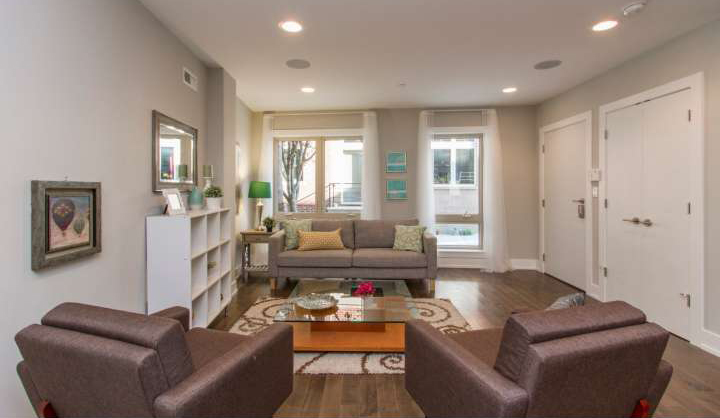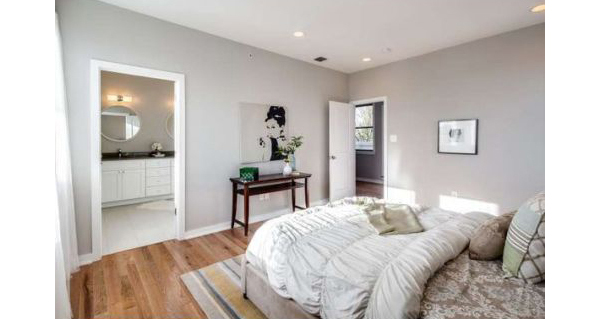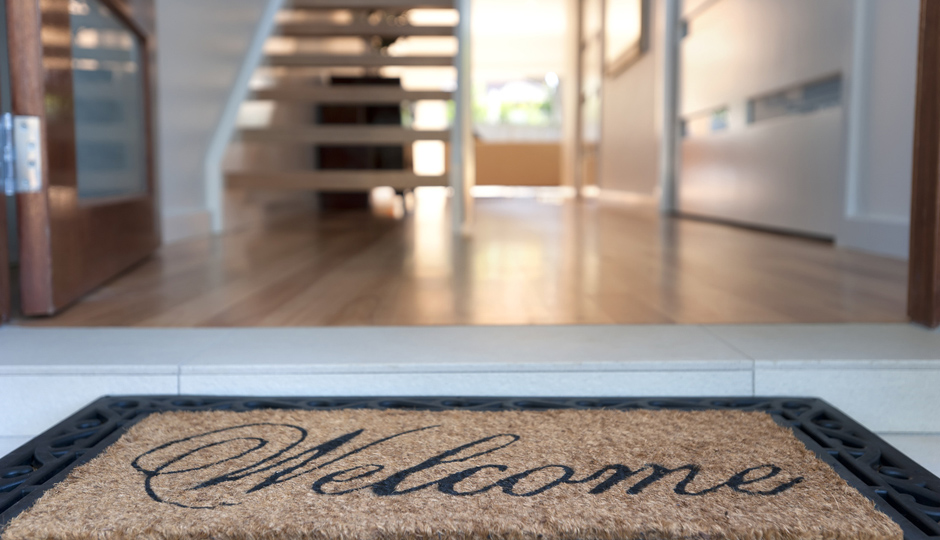Home Staging 101: A Philly Pro on How to Style Your House to Sell Fast
There’s almost nothing more stressful than selling a house — except, maybe, shopping for one. Three years ago when I was house hunting, I remember having a reeeeeally hard time seeing past some of the homeowners’ decor choices: the gold gilded mirrors, the odd little knick knacks, the kids’ toys everywhere.
“Many times, homeowners forget they’re selling the building, not their home, exactly,” says Ali Kutner, staging coordinator at the Kensington-based interior design and staging firm Sunflower Creations. “New buyers want to come in and make it their home, and they don’t want to think of it as someone else’s home.”
The goal, Kutner explains, is to strike a balance between a presenting a home that’s a total blank slate (i.e. completely stark and empty) and one that feels overly lived-in (i.e. tired, worn out furniture; family photos adorning every wall). Why? To give the buyer an idea of how they can use the space while leaving room for them to visualize it as their own. Doing so, according to a survey by the National Association of Realtors, could help your home sell at a higher price, and maybe even faster to boot; Kutner says many of the homes she stages sell within 30 days.
Ready to get started? Consider this your cheat sheet for staging your home like a pro.
1. Skew contemporary.

A Sunflower Creations staging project at 796 South Front Street | Photo via MLS
When Kutner and her team bring furniture into an empty home, it’s almost always contemporary in style: clean lines, minimalist. “It’s sort of a blank slate, as far as design style goes, and it has a wider appeal,” she says. That’s especially true for younger professional buyers, whom Kutner says she caters to particularly in Center City starter homes and condos. Even if your personal style is more traditional, you can add some contemporary elements or aesthetic by paring down to essential pieces, creating clean lines, and building each room around a central focal point.
2. Think about how the space should function — not necessarily how it already functions for you.
This is where you really have to put yourself in your buyer’s shoes. Example: You never, ever eat in your dining room, so somewhere along the way you decided to give up the whole ruse and stick your dining room table in the basement. Sure, the empty space works perfectly for you, but what if your buyer likes having a formal sit-down meal? It’s time to bring the ol’ table out of the basement.
Here’s another one: A lot of people work from home these days, so even if you’re a traditonal 9-to-5-er, it’s smart to carve out a workspace to show how working from home could make sense in your house.
“Creating a sense of function is especially important in a small house,” explains Kutner. You want to show the buyer how the space can be maximized to accommodate all of their needs. If there’s no dining area or office space, it’s going to look like your home is lacking the room for those things.
3. Bring in color with accents.

A Sunflower Creations staging project at 524 Montrose Street | Photo via MLS
If you only follow one piece of advice from this list, make it this one: Deny all of your instincts to paint a bright red accent wall in your living room. Even though you might like that pop of crimson, assume your buyers will not — and having to paint over your accent wall might mean the difference between a buyer making an offer and walking away. It’s better to go neutral and bring in pops of color with accents: pillows, throw blankets, rugs, artwork. These things lend personalty without overwhelming.
4. Go for big, bold statement pieces of art.

A Sunflower Creations staging project on Provident Avenue | Photo via MLS
Yup, that advice you hear about personal photos and mementos is true: They’re a bad idea when you’re selling your home. Instead, declutter — and help neutralize your space — by stashing your vacation photos and replacing them with big, bold pieces of art. Just one in a room will do. And they needn’t to break the bank: Kutner recommends scouring the shelves at Marshalls or HomeGoods for inexpensive pieces that will mesh with your decor.
5. Downplay flaws, and accentuate positive features.

A Sunflower Creations staging project on Mitchell Street. (Please note the crisp, clean bedding.) | Photo via MLS
Your floors might not be in the best shape, but, man, is your fireplace awesome. So, sell it. Cover the floors with a neutral area rug that won’t draw too much attention and focus your design energy on the fireplace. Play up the mantle. Go hog wild with some just-so vignetting. “We don’t try to cover up flaws per se, but we can steer people in a direction,” says Kutner.
Another thing to consider: If your furniture or fixtures look tired and worn, it might be all your buyers notice. I’m not saying you should go out and buy a new couch, of course, but think about how you can freshen things up: new pillows and a throw on the couch, clean bright-white towels in the bathroom, new bedding in the bedroom.
6. Be smart about staging outdoor spaces.
If you have the greenest thumb on the planet and the season is just right, go ahead and recreate the Garden of Eden on your back patio. The rest of us, Kutner advises, should employ pieces — brightly colored outdoor furniture, a playful outdoor rug — that won’t turn brown without proper watering. This is especially true if you’re selling your home in the winter months. Since you can’t plant flowers, you can at least create the idea of a non-neglected playful outdoor space with the right furniture. Kutner recommends checking out the offerings at Ikea. (Bonus: This stuff is often on sale in the off-season.)
7. Have kids? Find some storage — fast.
Kids come with a lot of stuff, don’t they? It’s the lesson every new parent learns approximately 15 seconds after the baby shower ends. And it’s a particularly hard lesson for parents who live in cramped closet-deficient Philadelphia rowhomes. (I say all of this from experience.) Nevertheless, we must make our buyers *think* our homes have storage galore, and the best way to do it is make sure they aren’t tripping over our children’s ride-on bikes, bouncy balls and puzzles. If your kids’ toys are overflowing from every nook in the house, it’s time to edit — or at the very least, stash some of it at Grandma and Grandpa’s. If you have a designated playroom (lucky you!), make sure it’s tidy and organized.



